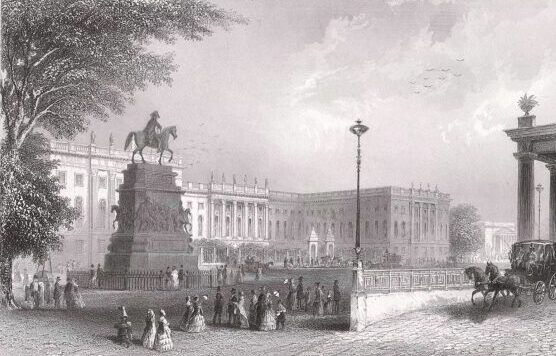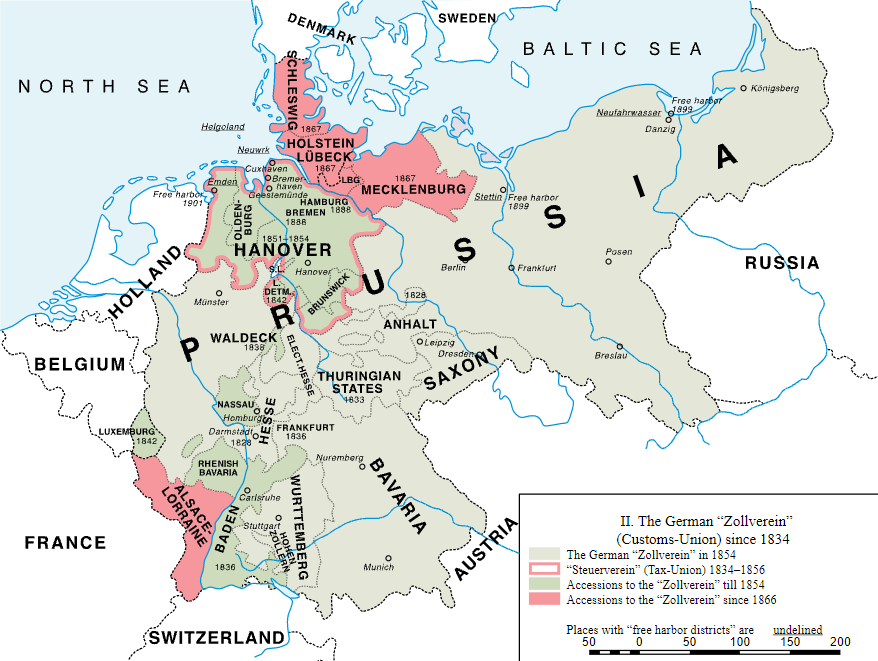Grown Up
The grown up years of Berlin begin with the coming of 18th century. Frederick William’s shoes were pretty hard to fill. His legacy would outlast him and he would forever be known as “the Great Elector”. However, because of the foundations, he had laid during his term his heirs would reap the benefits of all his work. In 1701 the dual state of the Margraviate of Brandenburg and the Duchy of Prussia formed the Kingdom of Prussia, with Frederick III, Elector of Brandenburg, crowned as king Frederick I in Prussia. As the capital of Prussia and its royal seat, Berlin entered into a virtuous cycle. The merging of five adjacent towns – Berlin, Cölln, Friedrichswerder, Friedrichstadt, and Dorotheenstadt – in 1709 triggered a significant spurt in growth. Frederick I and his son Frederick William I (1713-1740) started many ambitious building projects, the results of which still attract many tourists to Berlin today.
Overall the cities of Brandenburg stagnated economically at the beginning of the 18th century. Problematic for their development was the fact that their own sales market was lacking affluent buyers, so their trade remained localized. The only exception was Berlin, which were triggered by the trade in Berliner Hof, a more developed demand market for certain contemporary products in the luxury segment had developed. This led to a strong population growth in Berlin from 1685 to 1711 from around 18,000 to 55,000 inhabitants to 72,000 in 1730. Around 1730, the city was extended along Friedrichstrasse to create Southern Friedrichstadt.
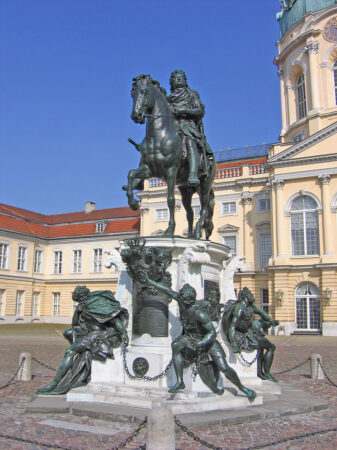
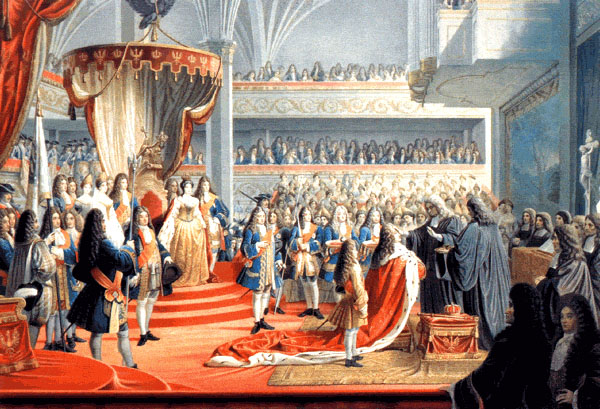
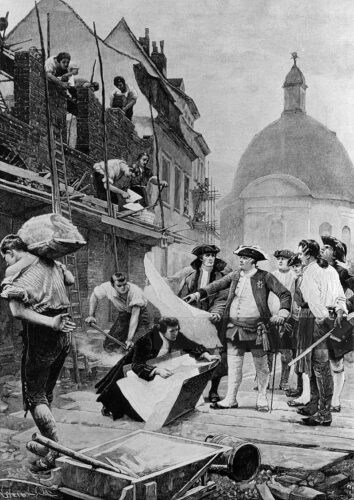
Three prominent squares that bordered the new area to the west and south were given specific geometric forms: Pariser Platz at the Brandenburg Gate was designed as a perfect square, Leipziger Platz was octagonal and Hallesches Tor, at the southern end of Friedrichstrasse, was round. In the late 17th century, the area of Berlin comprised what are now the districts of Mitte and Kreuzberg. At the time, the city was surrounded by a 17-kilometer (10.6-mile) wall. To this day, the names of many places and public transport stops refer to the old gates along this wall.
Even before he ascended to the throne in 1740, Frederick the Great started to develop his plan for a capital that would be a center of enlightenment and grand new buildings like the ones he had seen in Paris and London would bring Berlin to their level of prestige. The new king intervened very heavily in the design of all buildings and even their furnishings. He immediately made Charlottenburg Palace his residence. He was very drawn to the place his sophisticated grandmother Sophie-Charlotte had created. The rooms on the upper floor of the central building were prepared for him and the whole castle was renovated in the Rococo style.
Furthermore, he had Monbijou Castle – on the northern bank of the Spree opposite today’s Bode Museum – modernized and considerably expanded. The city fortifications built in the middle of the 17th century had already been demolished and replaced by the 15 km long tariff wall. City gates such as the Hallesche Tor, the Spandauer Tor, the Oranienburger Tor, etc. enabled access to an area where around 80,000 residents now settled. Although Friedrich’s interest in Charlottenburg died out in favor of the Sanssouci Palace near Potsdam, which was completed in 1747, further monumental buildings were intended to underline the capital’s character. In 1747-1750 a new cathedral was built at the Lustgarten. The old cathedral on Schlossplatz, which had emerged from a Dominican monastery founded in 1297, was demolished.

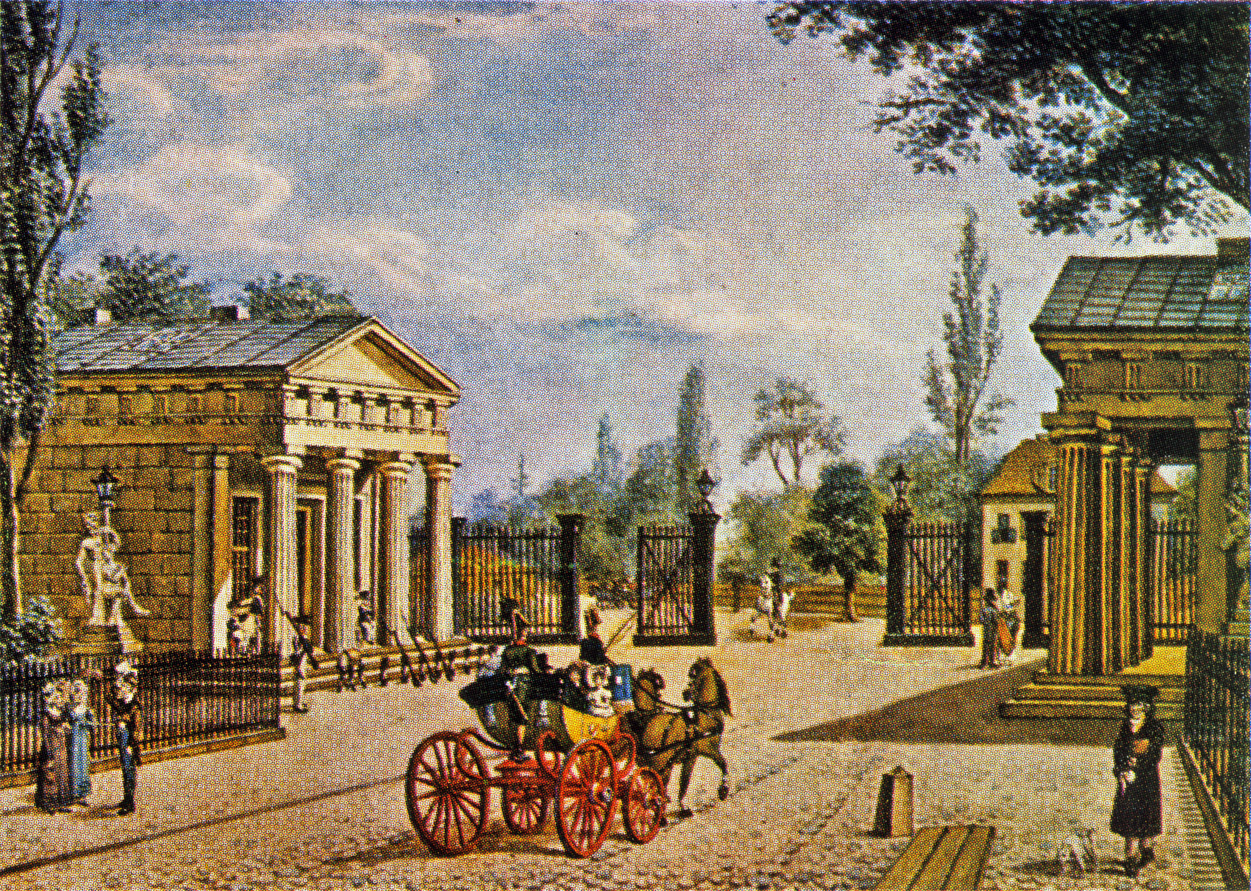
With the completion of the New Palace (Sanssouci) in Potsdam in 1769, Berlin became interesting again for Frederick II. Intensive construction work recommenced. Aimed at giving Berlin the appearance of a major European metropolis through new splendid sockets in the main streets the so-called royal immediate buildings were built on Unter den Linden, on Leipzigerstrasse, and Königsstrasse. Most of the private houses built at the king’s expense had to contribute significantly to the beautification of the city according to the king’s wishes. The pace of construction was fast, with more than 500 new houses built by 1785.
The representative buildings that were built during this period still shape the cityscape around the street Unter den Linden: the Zeughaus (already completed in 1707), the Kronprinzenpalais (1732), the Prinzessinnenpalais (1733), the Staatsoper (1742) and Opernplatz (1743), the Prinz-Heinrich- Palais (in 1810 it was to become the seat of the first Berlin university), St. Hedwig’s Cathedral (1773) and the Old Library (1780). Furthermore, the Long Bridge (now the Rathausbrücke) was Berlin’s only stone bridge. In 1776-1783 Georg Friedrich Boumann the Elder built Königsbrücke with colonnades in the style of a triumphant arch.

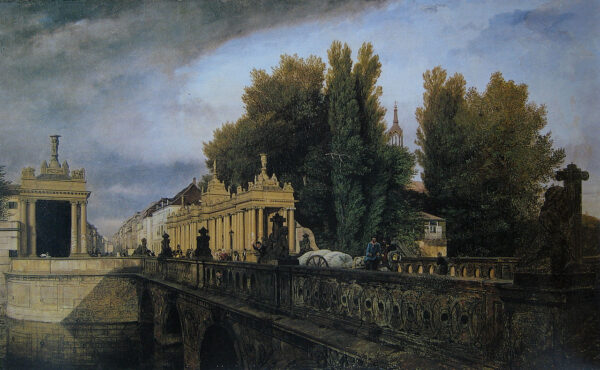
During the whole time of Berlin’s growth and building spree, Prussia was also experiencing a period of phenomenal military triumphs, mainly against the Austrians but also against the Bavarians and the Saxons. The victories would earn him new territories and admiration from both friends and enemies who acknowledged the Prussian army as one of the strongest in Europe.
As in any war, victories came with a high price of thousands lost on the battlefields, economic turbulence, consecutive devaluation of the Prussian coin, and massive inflation. But at the same time Frederick’s reforms in the judicial system, his religious tolerance, the freedom of speech in press and literature, his support of industry, the introduction of new crops in agriculture, and his promotion of science, arts, and education, all made Prussia and especially Berlin a center of European Enlightenment.

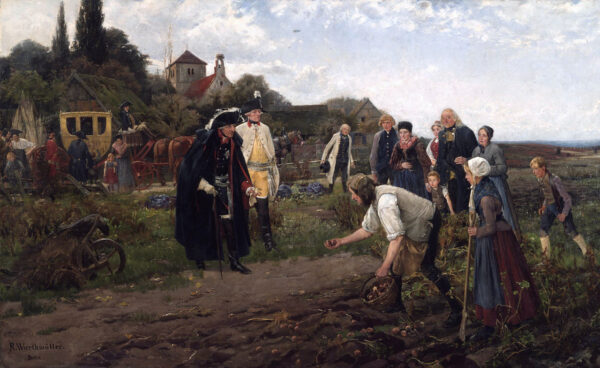
The next king, Frederick William II was not a man who gave much credit to trivialities like the military or foreign policy. He was however loved by his subjects because of his generous reduction of taxes and he was a lover of arts and architecture. His major contribution to the city will forever come to symbolize Berlin and very often Germany to this day. The Brandenburg Gate was not part of the old fortifications. However, the previous building of the Brandenburg Gate was one of the 18 gates in the Berlin customs wall, which was built in the 1730s.
The Brandenburg Gate was built on the road to Brandenburg Havel, the city that also granted Berlin city rights. The building contract for the new Brandenburg Gate, given by Friedrich Wilhelm II was supposed to represent a symbol of peace. The gate was designed by Carl Gotthard Langhans, he was based on a “City Gate of Athens”. The Brandenburg Gate was built between 1788 and 1791 and after its completion replaced the simple guard houses in the customs wall.
The gate consists of twelve Doric columns, six on each side. The pillars together form five passageways. Originally, citizens were only allowed to use the outer two of the passageways on each side. At the top of the gate, you can see Victoria, the Roman goddess of victory. She stands in a chariot pulled by four horses, the Quadriga. The original name of the new Brandenburg Gate was “Peace Gate” and the goddess in the Quadriga was originally Eirene, the goddess of peace. But the symbol would change after the end of the Napoleonic Wars that would follow.
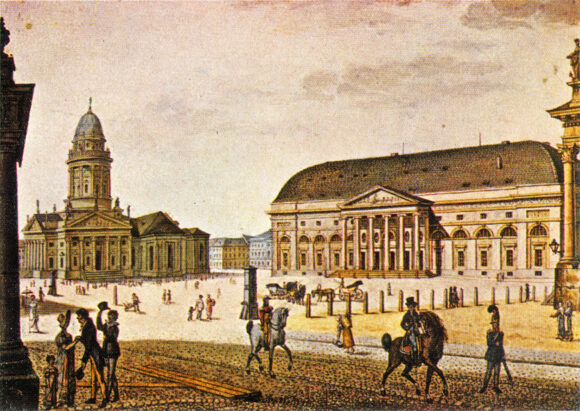
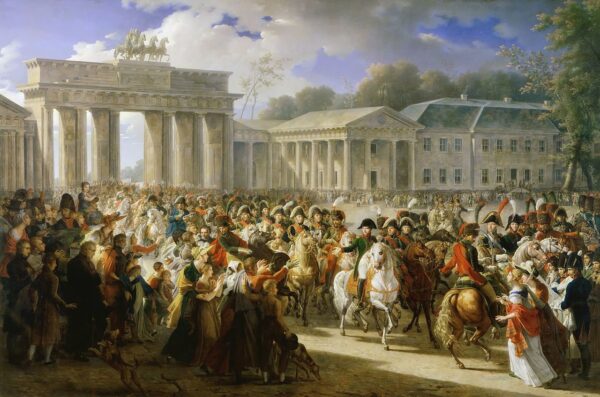
When the French Emperor Napoleon Bonaparte and his troops marched into Berlin in 1806, the Prussian King Friedrich Wilhelm III (r.1797 – 1806) fled to Koenigsberg. He returned after two years of French occupation. From this point on, the industrialization of Prussia and Berlin advanced in full swing.
The population of the city which had skyrocketed to almost 180,000 by 1803 and reduced to 145,000 by the end of the French occupation in 1808, started increasing again rapidly after 1809. In 1810 the University of Berlin was established at the Prinz-Heinrich-Palais on Unter den Linden and the Natural History Museum was established as part of the University of Berlin. By the time a recession hit the whole of Europe in 1844 the city’s population had exploded to more than 300,000 people.
Locomotives built at the Royal Prussian Iron Foundry roamed the gas-lighted streets. The railway linked Berlin with Potsdam, Saxony, and Frankfurt. The first zoo in Germany had opened its doors on the southwestern edge of the Großer Tiergarten. Until 1900 it was the largest zoo in the world. A great part of Prussia’s and Berlin’s growth was based on the economic unification and elimination of dilapidated obstacles like internal tariffs achieved with Zollverein, a precursor of the European Union that had been introduced in the 1820s and 1830s within the various Prussian and Hohenzollern territories. The economic union took a broader role in 1834 with the inclusion of most German states. (not the Austrian Empire).
